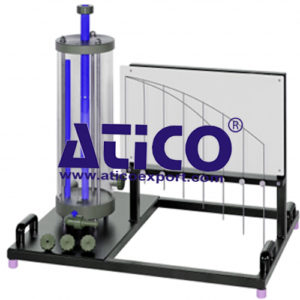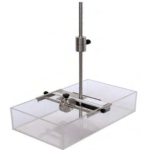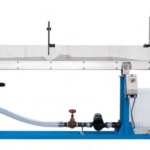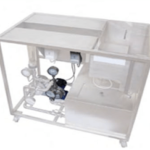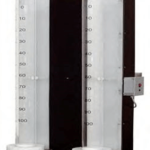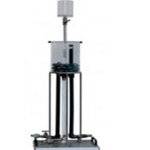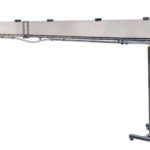Hydrodynamics considers the relationship between the trajectory, the outlet contour and the outlet velocity during flow from tanks. These considerations have practical applications in hydraulic engineering or in the design of bottom outlets in dams, for example.
It allows a user to study and visualise the profile of a water jet. Additionally, the contraction coefficient can be determined as a characteristic for different contours.
The experimental unit includes a transparent tank, a point gauge and a panel for visualising the jet paths. An interchangeable insert is installed in the tank’s water outlet to facilitate the investigation of various openings. Four inserts with different diameters and contours are provided along with the unit.
Learning objectives and experiments
- Recording the trajectory of the water jet at different outlet velocities
- Study of how the level in the tank affects the outlet velocity
- Determination of the contraction coefficient for different contours and diameters
- Comparison of the actual and theoretical outlet velocity
Features
- Visualisation of the trajectory of the outlet jet
- Study of openings with different diameters and contours
- Determination of the contraction coefficient
Specification
- Study of horizontal flows from tanks
- Determining the contraction coefficient for different outlet contours and diameters
- Tank with adjustable overflow and scale
- Four interchangeable inserts with different diameters and contours
- Point gauge with eight movable rods for visualisation of the jet path
- White panel for recording the trajectory
- Flow rate determined by base module
- Water supply using base module or via laboratory supply
Technical specification
- Tank
- Height: 510mm
- Ø 190mm
- Contents: approx. 13,5l
- Inserts with rounded contour
- 1x ø 4mm
- 1x ø 8mm
- Inserts with square contour
- 1x ø 4mm
- 1x ø 8mm
- Point gauge, 8 movable rods
- Length: 350mm

